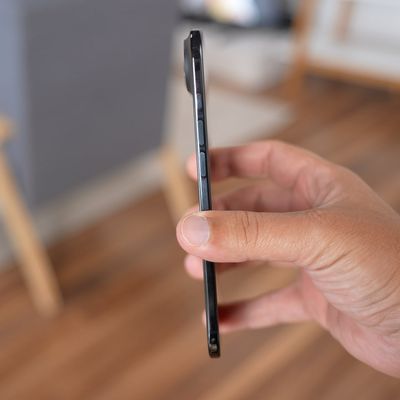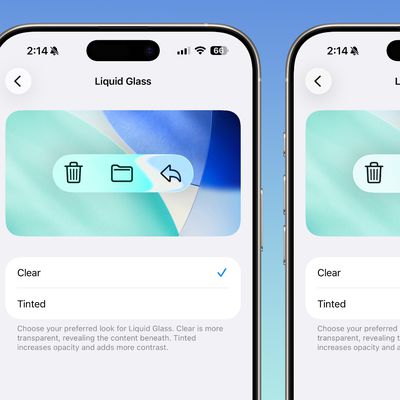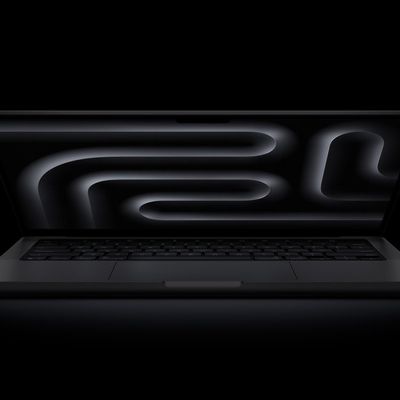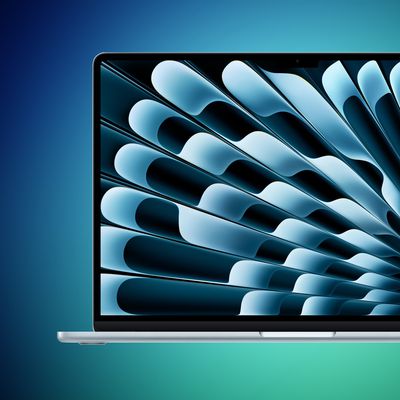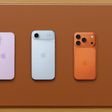In-Cell Touch Technology Could Help Apple Reduce Next iPhone's Thickness by 15%
Following last week's rumor that Apple is looking to adopt thinner in-cell touch technology for the display of the next-generation iPhone, analyst Ming-Chi Kuo, who recently took on a new position with KGI Securities, has issued a report looking at how that change could help Apple reduce the thickness of the iPhone from the current 9.3 mm of the iPhone 4S to under 8 mm. The move would help Apple to compete against its Android-based challengers, which have continued to see reductions in their thickness over time.
Since Apple’s smartphone competitors have generally slimmed down their high-end offerings to 7-8mm, Apple needs to make a leap forward from 4S’ 9.3mm thickness. We believe Apple will aim at 8mm or below (at least 1.4mm slimmer) for iPhone 5, in a bid to ensure brisk sales through 2014, while peers will also continue to introduce increasingly slim models next year.
As such, all iPhone 4S components that account for thickness must be slimmer, specifically, touch panel, battery and casing. Moreover, a marginal amount of space is required between the three parts for the sakes of assembly tolerance and thermal expansion of components.
Kuo calculates that shifting to in-cell touch technology in the next iPhone will yield Apple just shy of 0.5 mm in terms of a reduction in thickness. Kuo envisions a similar reduction coming from the battery, which he predicts Apple will be able to broaden somewhat inside the casing, allowing for a roughly 10% reduction in battery thickness.
A final 0.5 mm reduction in thickness could come from the use of a metal back case, which could come in at half the thickness of the glass back used in the current iPhone. Altogether, Apple could shave 1.4 mm from the iPhone's thickness to bring the next-generation model in at just 7.9 mm thick.
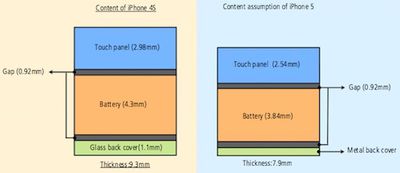
In yet another argument for the adoption of in-cell touch technology for the display in the next-generation iPhone, Kuo notes that display production would be greatly simplified, with fewer steps in the manufacturing process and fewer vendors being involved resulting in an estimated reduction in production time from 12-16 days to just 3-5 days.
While the initial yield on in-cell touch displays is currently lower than for glass-on-glass manufacturing techniques such as those used for the iPhone 4S, that deficiency can be compensated for by re-bonding in-cell panels and cover glass units with the optically clear resin (OCR) used in the bonding process. The optically clear adhesive (OCA) used in the current manufacturing process can not be re-bonded if the initial bonding fails.
Popular Stories
Apple plans to cut production of the iPhone Air amid underwhelming sales performance, Japan's Mizuho Securities believes (via The Elec).
The Japanese investment banking and securities firm claims that the iPhone 17 Pro and iPhone 17 Pro Max are seeing higher sales than their predecessors during the same period last year, while the standard iPhone 17 is a major success, performing...
iOS 26 was released last month, but the software train never stops, and iOS 26.1 beta testing is already underway. So far, iOS 26.1 makes both Apple Intelligence and Live Translation on compatible AirPods available in additional languages, and it includes some other minor changes across the Apple Music, Calendar, Photos, Clock, and Safari apps.
More features and changes will follow in future ...
Apple's software engineers continue to internally test iOS 26.0.2, according to MacRumors logs, which have been a reliable indicator of upcoming iOS versions.
iOS 26.0.2 will be a minor update that addresses bugs and/or security vulnerabilities, but we do not know any specific details yet.
The update will likely be released by the end of next week.
Last month, Apple released iOS 26.0.1,...
Apple on Wednesday updated the 14-inch MacBook Pro, iPad Pro, and Vision Pro with its next-generation M5 chip, but previous rumors have indicated that the company still plans to announce at least a few additional products before the end of the year.
The following Apple products have at one point been rumored to be updated in 2025, although it is unclear if the timeframe for any of them has...
With the fourth betas of iOS 26.1, iPadOS 26.1, and macOS 26.1, Apple has introduced a new setting that's designed to allow users to customize the look of Liquid Glass.
The toggle lets users select from a clear look for Liquid Glass, or a tinted look. Clear is the current Liquid Glass design, which is more transparent and shows the background underneath buttons, bars, and menus, while tinted ...
iOS 26.4 is expected to introduce a revamped version of Siri powered by Apple Intelligence, but not everyone is satisfied with how well it works.
In his Power On newsletter today, Bloomberg's Mark Gurman said some of Apple's software engineers have "concerns" about the overhauled Siri's performance. However, he did not provide any specific details about the shortcomings.
iOS 26.4 will...
While the new iPad Pro's headline feature is the M5 chip, the device has some other changes, including N1 and C1X chips, faster storage speeds, and more.
With the M5 chip, the new iPad Pro has up to a 20% faster CPU and up to a 40% faster GPU compared to the previous model with the M4 chip, according to Geekbench 6 results. Keep in mind that 256GB and 512GB configurations have a 9-core CPU,...
Apple on Wednesday updated the 14-inch MacBook Pro base model with an M5 chip, and there are two key storage-related upgrades beyond that chip bump.
First, Apple says the new 14-inch MacBook Pro offers up to 2× faster SSD performance than the equivalent previous-generation model, so read and write speeds should get a significant boost. Apple says it is using "the latest storage technology," ...
Apple plans to launch MacBook Air models equipped with the new M5 chip in spring 2026, according to Bloomberg's Mark Gurman. Apple is also working on M5 Pro and M5 Max MacBook Pro models that will come early in the year.
Neither the MacBook Pro models nor the MacBook Air models are expected to get design changes, with Apple focusing on simple chip upgrades. In the case of the MacBook Pro, a m...



